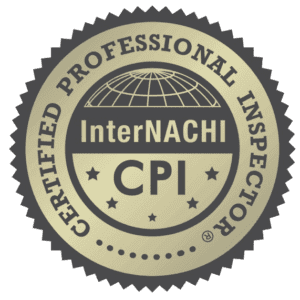Snow is fun the first time it falls during the winter months, but after the novelty of the season wears off it's just a big pain in the butt. The endless shoveling/salting, slower commutes, and wet shoes have never made anyone happy. But for all the pain that snow can be, I have one more useful thing that snow can do and that is help you evaluate the adequacy of your attic ventilation. OK, you still may not find this a good enough reason to have endless snow like we seem to be experiencing right now in 2021, but lets continue anyway.
How Does Attic Ventilation Work?
Attic ventilation is a key component to the health of any home. Having poor attic ventilation can cause mold growth, moisture retention, and ice damning. Unfortunately, attic ventilation is also hard to truly evaluate unless you do some expensive testing. The reason behind this is because the ventilation requires several components to be successful and keep your attic space healthy. The main three components that are key for good attic ventilation are lower vent, top vents, and insulation. All three of these need to be properly sized and installed for the system to work.
Your attic ventilation works on the basic premise that hot air rises. Your ventilation system wants to remove the hot (or warmest air) from the attic so it can remove air that is too humid and keep the temperature in the attic space around the same temperature of the outside air. As you can see below, a common ventilation design has a vent right at the top of the roof called a ridge vent where the warm air rises and exits the attic space. Just as important are the lower vents at the soffits in this picture as they pull fresh cooler air into space by what is called the stack effect. Without these lower vents, space would not vent as fast. If you have ever shotgunned a beer, it is kind of the same principle. If you don’t have a dedicated vent to allow air to flow into space, you create a vacuum for a second that slows the flow of the beer or the flow of the warm air out.

The last important component of the ventilation system is the attic insulation. While it does not affect how fast the air is replaced in the attic space, it does effect the overall conditions of the space and makes it harder for the vents to keep the space cooler. During the winter, if you don’t have good insulation and are heating your house you will be heating up your attic space as well which is not ideal. The ventilation system will still do its job to remove the hot air, but it will have to work harder and may not be able to keep up.

How Snow Can Help You Evaluate
So back to snow, and why it can help determine the adequacy of your ventilation system. When there is good snow (several inches) and it is followed by temperatures that are below freezing, your roof should for the most part retain the snow that has accumulated on it. This is because a well-ventilated attic will keep the roof service temperature about the same as outside. If your attic is not properly ventilated, it will be noticeably warmer than outside and begin to melt the snow through its contact with the roof that is now warmer than outside. If you notice that the snow on your roof melted while your neighbors still have theirs, then that is a sign that your attic ventilation is insufficient and you should have a professional evaluation.
You may also notice ice damning (see above picture) around your roof and that is the cause of the snow melting due to improper ventilation. Ice Damning will eventually damage your roofing substrate. During the summer months, you may also have issues with mold growth as enough hot humid air is not able to be properly vented from the attic space.
What to Do if You Have Poor Ventilation
In this case, it is usually best to call in a professional as there are calculations involved when it comes to ensuring adequate vents are installed. Several items that may need to be fixed are:
- You don’t have adequate vents at the top of your roof.
- The lower soffit vents are blocked, not enough, or missing in general.
- You need to add more attic insulation
- There are air leakage points into your attic
- A combination of the above.
Consult with a professional and get several quotes and opinions. It might not be a cheap fix, but it will be cheaper than the repairs that will be required due to neglect.



